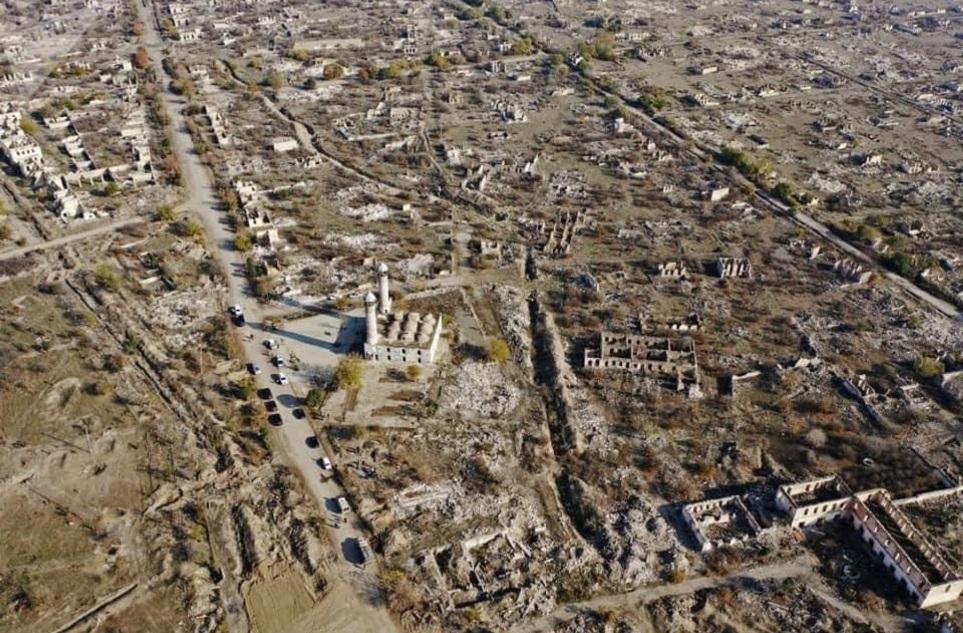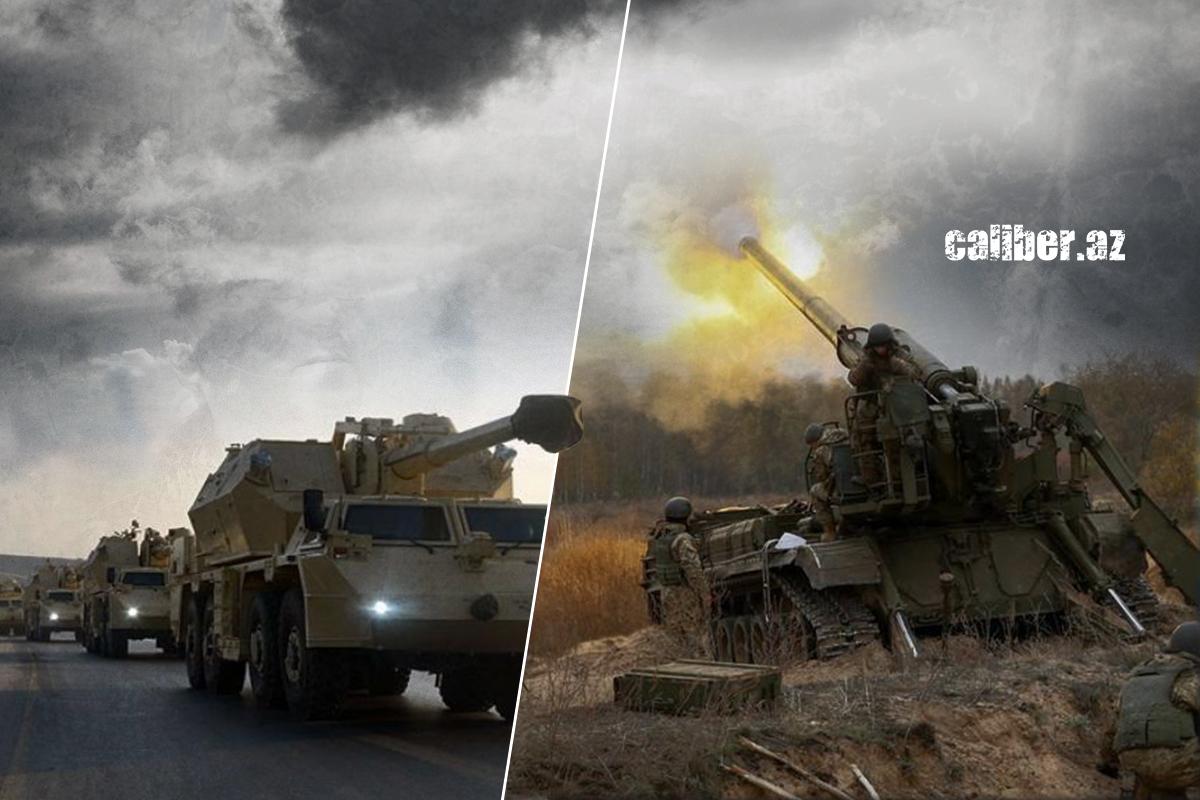Azerbaijan's triumph over decades of Armenian aggression and injustice Path to victory
"Face to face, you cannot see the face. Great things must be seen at a distance." This quote by Russian poet Sergei Yesenin is especially apt when reflecting on the events of four years ago. These events marked the end of a long-standing tragedy, one that had dragged on for far too long. In the late 1980s, the leadership of the Armenian SSR, supported by the Armenian diaspora, began executing their deceptive and treacherous plan.
Recognizing the Soviet leadership's growing indifference, especially under Mikhail Gorbachev, they saw an opportunity to detach Karabakh from Azerbaijan and annex it to Armenia. This was a ruthlessly cruel scheme, and it is crucial to remind both the current leadership of Armenia and those who seek to portray the country as a "victim" or "dove of peace" of this dark chapter in history.
As early as late 1987, the brutal deportation of Azerbaijanis from their ancestral lands in the Gafan region of the Armenian SSR began. This violent campaign expanded in 1988-1989, affecting Azerbaijanis living in various cities and regions of Armenia. Over 250,000 Azerbaijanis were forcibly expelled from their historic homes, 216 were brutally killed, and 1,154 were injured. Fleeing Armenian violence, they sought refuge in Azerbaijan.
Before 1988, Azerbaijanis had lived in compact communities throughout Armenia. However, unlike the Armenians in the former Nagorno-Karabakh Autonomous Oblast (NKAO), the Soviet government did not grant autonomy to the Azerbaijani-populated areas within the Armenian SSR. This is an important fact to remind the representatives of official Yerevan and various external actors who adopt anti-Azerbaijani resolutions and advocate for the return of Armenians to the Karabakh region of Azerbaijan.
The very region that was returned to Azerbaijan's control at the cost of tears, blood, suffering, and the heroism of the Azerbaijani people. We all remember that on September 2, 1991, within the boundaries of the former Nagorno-Karabakh Autonomous Oblast (NKAO) and the Shaumyan (rural) district of the Azerbaijani SSR, the so-called "Nagorno-Karabakh Republic" was declared, and on December 10, a "referendum" was held. In response, the Supreme Soviet of the Republic of Azerbaijan abolished the autonomy status of Karabakh on November 23, 1991.
However, Armenia, which had openly voiced territorial claims up until then, began military actions against Azerbaijan without declaring war. The First Karabakh War began, during which 20% of Azerbaijan's territory came under occupation. As a result of Armenia's aggression, over 1 million Azerbaijanis became refugees and internally displaced persons, more than 20,000 Azerbaijanis were killed during the military operations, and over 50,000 people were disabled.
A total of 900 settlements, along with 150,000 homes, 7,000 public buildings, 693 schools, 855 kindergartens, 695 medical institutions, 927 libraries, 44 churches, 9 mosques, 473 historical monuments, palaces, and museums, 40,000 museum exhibits, 6,000 industrial and agricultural enterprises, 160 bridges, and other infrastructure objects were destroyed in Karabakh from 1988 to 1993.

This is the scale of Armenia’s crimes against Azerbaijan. It is crucial to remember these facts now, as statements emerge from Yerevan about the Armenian leadership's readiness to sign a peace agreement. Despite this, there have been no changes to Armenia’s Constitution, which still contains territorial claims against Azerbaijan. These claims were the root cause of two wars, including the 44-day war. The current Armenian leadership did everything possible to escalate tensions, misjudging its own strength while underestimating Azerbaijan’s capabilities.
As early as July 2020, Armenia initiated another military provocation in the Tovuz direction along Azerbaijan's state border. These provocations aimed to create a new flashpoint of tension in the region, divert attention from Armenia's occupation of Azerbaijani territories, involve third countries in the conflict, and inflict damage on Azerbaijan’s strategic infrastructure.
Armenia failed to achieve any of its objectives, but by August 2020, the country resorted to another military provocation, sending a sabotage group into Azerbaijan with the intent to carry out terrorist acts. However, on August 23, 2020, the group was neutralized, and its leader was captured, thus thwarting yet another terrorist plot.
Official Baku sought to convey a simple truth to the international community—that Armenia was continuing its preparations for war against Azerbaijan. On September 21, 2020, during his address at a high-level meeting of the 75th session of the UN General Assembly, President Ilham Aliyev of Azerbaijan, also the Chairman of the Non-Aligned Movement, stated that Armenia’s aggressive rhetoric and provocations were clear signs of preparations for a new act of aggression against Azerbaijan.
Later, on September 24, 2020, President Ilham Aliyev of Azerbaijan once again warned during his speech at the General Debate of the 75th session of the UN General Assembly that Armenia was preparing for a new war with Azerbaijan. At that time, these warnings went unheard. As a result, Armenia, encouraged by the silence of the international community, crossed the "red line." In the early morning of September 27, 2020, the Armenian Armed Forces launched an attack, firing heavy weapons, mortars, and artillery at the positions of the Azerbaijani army along the front line. They also targeted settlements in the frontline zone, including those in the Tartar, Aghdam, Fuzuli, and Jabrayil regions of Azerbaijan, causing civilian casualties.

Azerbaijan was left with no choice. This is how the 44-day war began. During the conflict, not only the leaders of the global Armenian diaspora and the politicians, journalists, and public figures that they influenced, but also the presidents of several countries, stood by official Yerevan. In particular, the President of France, Emmanuel Macron, made numerous statements in support of Armenia. He lied, and resorted to blackmail, but nothing worked. Even the militants from Syria, Lebanon, and other regions could not aid Armenia.
Then, on November 8, 2020, President Ilham Aliyev, Supreme Commander-in-Chief of Azerbaijan, addressed the nation from the Alley of Martyrs and announced the historic news: the great city of Shusha had been liberated!
It was a moment of joy mixed with tears for every Azerbaijani, regardless of where they lived. This event will be remembered with pride and happiness by many future generations of Azerbaijanis. It was a victory over Armenia, the global Armenian diaspora, and the countries that continue to support them to this day. It was a triumph over the plans that began to take shape in the late 1980s. Azerbaijan became the only country capable of liberating its lands from occupiers, proving that a "frozen" conflict can be resolved through military-political means. No other country in the world has achieved this. This is why the true scale of Azerbaijan’s great victory will be fully understood from a distance, over decades.
To conclude, I would like to quote President Ilham Aliyev from his recent address to the nation: "The roots of separatism were cut off and its book was closed. There are no more traces of separatists in the land of Karabakh."








